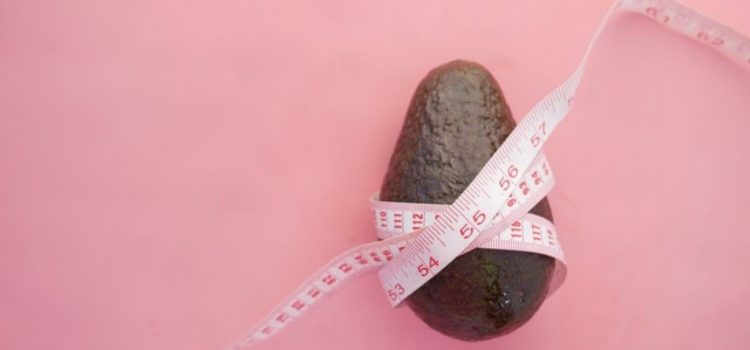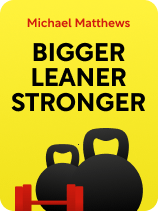

This article is an excerpt from the Shortform book guide to "Bigger Leaner Stronger" by Michael Matthews. Shortform has the world's best summaries and analyses of books you should be reading.
Like this article? Sign up for a free trial here.
Are you looking to build muscle? Should you burn fat first?
You’ve decided you want to change your physique in some way. Before diving into a diet and meal plan, you should clarify your diet goal. In Bigger Leaner Stronger, personal trainer Michael Matthews discusses three aims you can choose from—losing fat, maintaining your current physique, or bulking up.
Keep reading for Matthews’s insights on these three diet goals.
Choose Your Diet Goal
Before you can create a meal plan, you must decide how you want to start changing your physique. You can prioritize losing fat, maintaining your current physique, or building muscle. Matthews explains that, unless you’re new to strength training, you can’t effectively lose fat and build muscle at the same time: trimming fat requires reducing calories, and having fewer calories available hinders your body’s ability to build muscle. Getting stronger and leaner typically requires alternating between phases of losing fat and building muscle. Matthews suggests you choose your diet goal first based on your body fat percentage.
| Is Body Recomposition Only for Beginners? Matthews argues that building muscle while losing fat (which is also known as “body recomposition”) is mainly possible for beginners, but others disagree and argue that body recomposition can be achieved even by seasoned weightlifters. They concede that it’s easier for novices to accomplish, but you can improve your chances of success by following these tips: Eat at least 1.62 grams of protein per pound of body weight daily, train hard using heavy weights, get at least eight hours of sleep, and stay well-hydrated. In The 4-Hour Body, Tim Ferriss recommends three tools for measuring body fat: dual energy x-ray absorptiometry (DEXA), BodPod, and BodyMetrix. However, if you don’t have the means to access these tools, he suggests you compare your body to pictures of other people at specific body fat percentages. |
Let’s now look at the three ways to start changing your physique: cutting to lose fat, maintaining to stay at your current weight, or lean bulking to build muscle.
Option #1: Cutting—The purpose of cutting is to trim fat. This approach requires you to eat fewer calories than you burn. Matthews suggests you start with a cutting phase if your body fat percentage is over 15%. Higher body fat takes longer to cut, requiring you to resist cravings longer, so working to reduce your body fat first makes it easier to succeed in subsequent cuts. End your cutting phases at around 10% to 12% body fat, as it’s harder to get leaner without intense diet control and exercise.
(Shortform note: Breaking up your cutting phase with the occasional refeed can help you lose weight faster, according to some experts. A refeed is when you increase your calorie intake for a short period of time. Your body adapts to a calorie deficit by slowing your metabolism, which causes your body to burn fewer calories. Refeeding occasionally boosts your metabolism back up by restoring your levels of leptin, a hormone that regulates hunger. Refeeds also improve your mood and energy, making it easier to stay on your diet.)
Option #2: Maintaining—The purpose of maintaining is to stay at your current weight and slowly build muscle. To do this, you must eat the same amount of calories you burn. According to Matthews, you should maintain if you’re happy with your physique.
(Shortform note: In The Hacker’s Diet, John Walker writes that most people who lose weight have a hard time maintaining their new weight. To maintain your weight once you’ve reached your target, he suggests you track your weight daily and start cutting calories if you exceed two pounds over your target weight.)
Option #3: Lean Bulking—The purpose of lean bulking is to build muscle and strength. This phase requires you to eat more calories than you burn. While this optimizes muscle-building, you’ll also gain some fat in the process. Matthews suggests you end your lean bulk when you have around 15% to 17% body fat so you don’t gain too much fat you’ll need to cut later.
(Shortform note: The quicker, yet unhealthier, version of lean bulking is called “dirty bulking.” This approach also promotes weight and muscle gain, but through eating lots of calorie-dense foods rather than healthy foods. Indiscriminately eating a lot of food guarantees that you’ll maximize muscle growth from your workouts and gain weight quickly. However, it also leads to more fat gain than lean bulking and is worse for your nutrition, causing more health problems over time.)

———End of Preview———
Like what you just read? Read the rest of the world's best book summary and analysis of Michael Matthews's "Bigger Leaner Stronger" at Shortform.
Here's what you'll find in our full Bigger Leaner Stronger summary:
- How to get the physique you want without trendy diets or brutal workouts
- A simple and scientific approach to nutrition and exercise
- How to plan a workout program based on progressive overload






